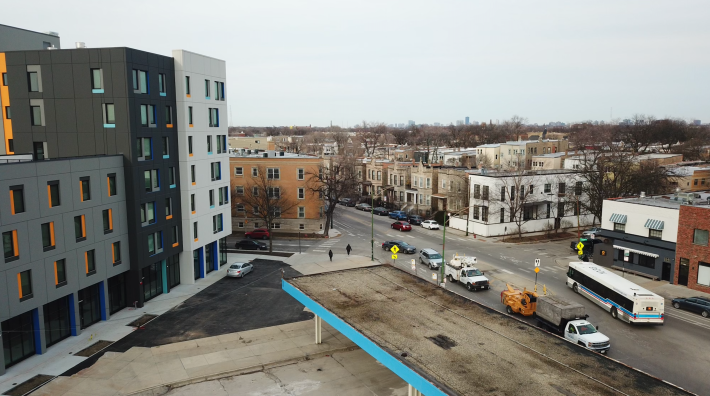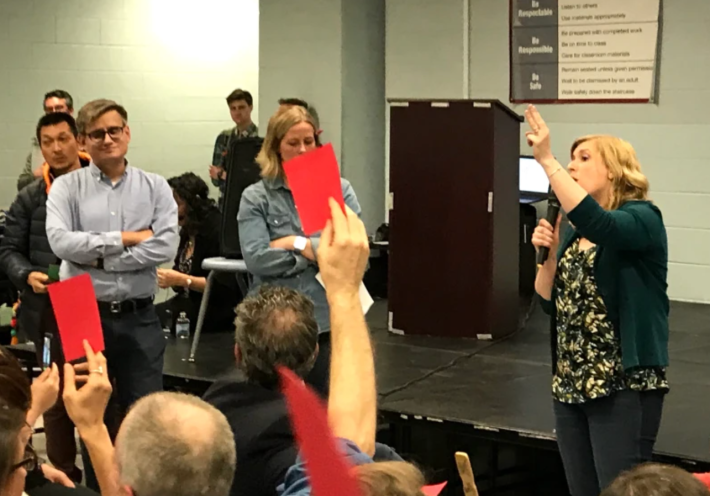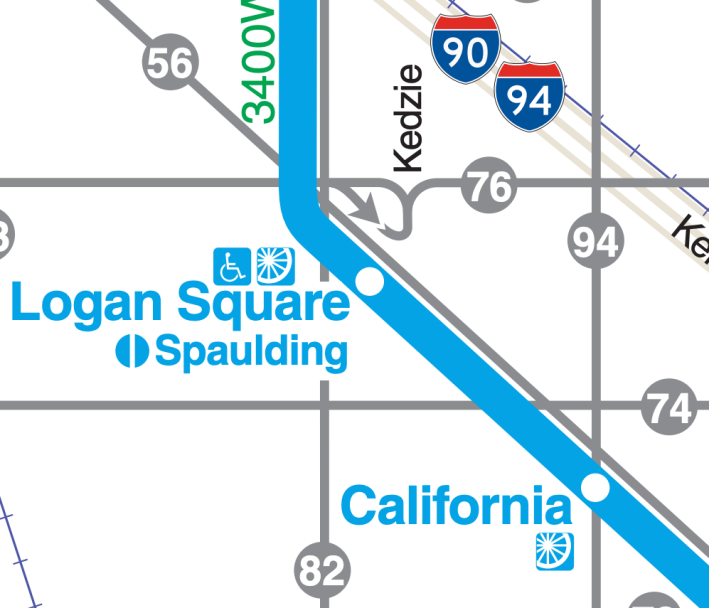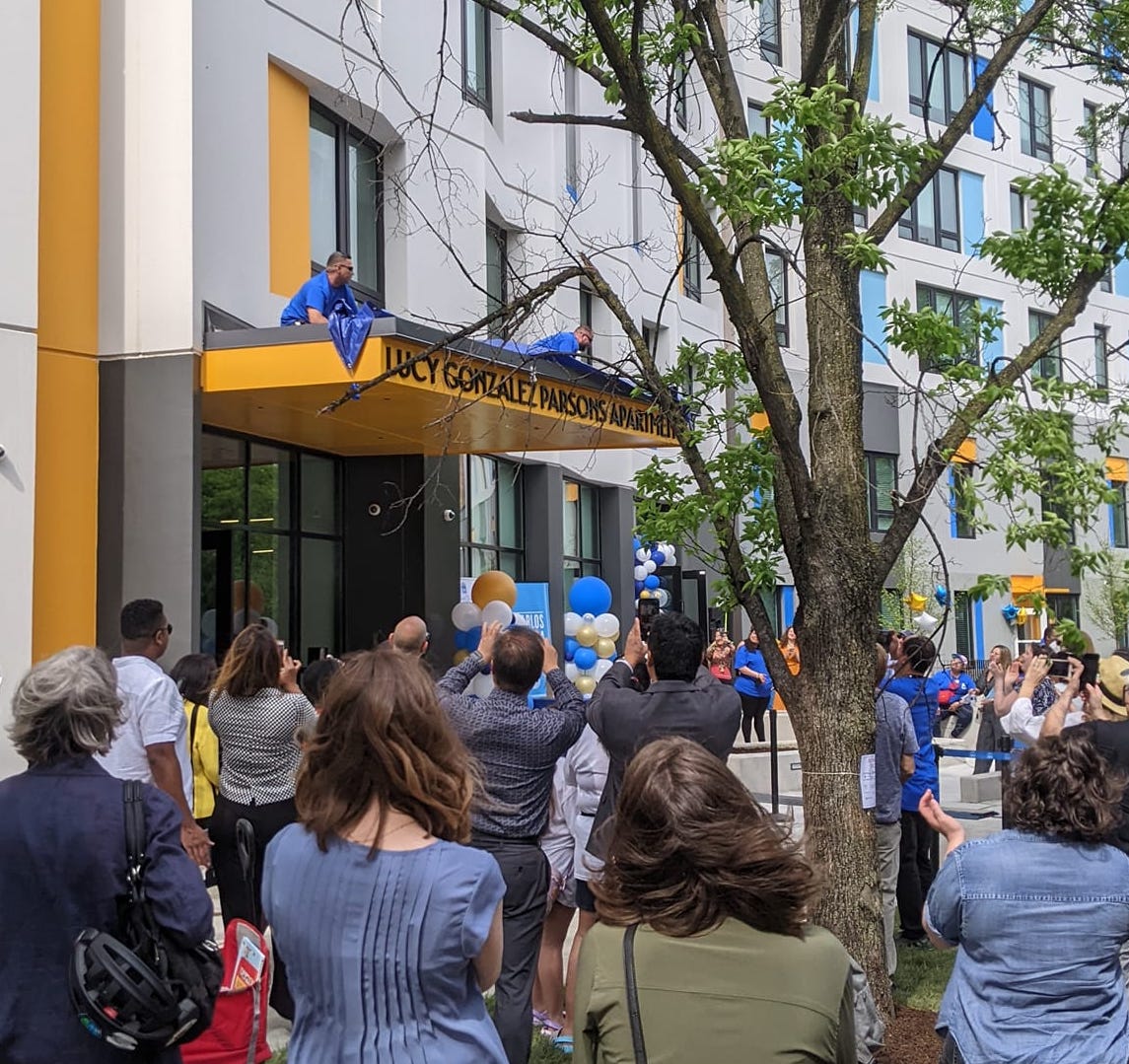As I've said before, if housing affordability in Chicago's swiftly gentrifying Logan Square neighborhood is like a sinking ship, the new all-affordable transit-oriented development that opened next to the eponymous Blue Line station last Friday is like a lifeboat. It provides low-income and working-class longtime residents with an opportunity to weather the storm.
Streetsblog Chicago strongly advocated for this project, a seven-story building with 100 affordable units in a prime location, convenient to 24-hour rapid transit and high-quality retail. It reflects the philosophy that, instead of taking the path of least resistance by building most of our city's affordable housing in lower-income communities where neighbors are less likely to oppose it, we should be building affordable apartments everywhere.

Moreover, if we want to help poor and working families build wealth, we should construct as much affordable housing as possible in the most desirable locations. Sites with great transit and retail proximity make it much easier for tenants to access jobs, education, healthcare, and other resources, which will greatly improve their quality of life. That's in the interest of all Chicagoans, of all income levels, because it will help create a safer, more peaceful, and more vibrant city. And, as an added bonus, enabling more people to easily live car-free will reduce crashes, air pollution, and traffic congestion.
The Gonzalez Parsons apartment bucks the trend towards transit-friendly housing mostly being available to the affluent. That problem is due to Chicago's inequitable focus on property taxes, rather than a city income tax, for revenue. Dependence on property taxes means that as neighborhoods like Logan Square gain more amenities and become more attractive to wealthier people, property values, property taxes, and rents steeply rise, making these communities unaffordable to many existing residents. And the new building reflects the city's growing commitment to equitable TOD as a strategy to fight poverty, which officials say is starting to pay off.

The Logan Square all-affordable TOD was bitterly opposed by property owners on Emmett Street, the residential roadway that borders the site, a former city-owned parking lot. The Not In My Back Yard-style opposition group Logan Square Neighbors for Responsible Development included affluent landlords, real estate agents, architects, and star libertarian lawyer Jacob Huebert, who won the famous Janus v. AFSCME case, which helped weaken labor unions.
After failing to stop the housing project during the community input process, the NIMBYs filed a nuisance lawsuit to block it, which was dismissed in June 2020. In his decision Cook County Circuit judge Neil H. Cohen stated, "The provision of affordable housing for low and moderate income residents of the city is a legitimate government interest... Increasing access to public transportation and encouraging public transportation use for people of all incomes is also a legitimate governmental interest."

Accordingly, Friday's ribbon-cutting was a joyous occasion. "This represents part of the solution to address segregation and displacement in neighborhoods like Logan Square," said local alderperson and champion of the project Carlos Ramirez-Rosa (35th), according to Block Club Chicago. "This was the city’s first equitable transit oriented development, but it is not its last.”
"Every resident in our city deserves equitable access to housing that is affordable and well connected to public transportation," said Mayor Lori Lightfoot in a statement. "The Emmett Street apartments will help the City not only expand its existing affordable housing stock, but also ensure that its tenants are surrounded by the resources they need to get around our city."
The project was led by Bickerdike Redevelopment Corporation, a nonprofit housing developer, and it features one-to-three bedroom units, including 14 two-story townhouse-style apartments. Half of the units will be rented at rates affordable to people making 60 percent of the Chicagoland area median income, currently $43,800 for one person and $62,520 for a four-person family. The other 50 are reserved for Chicago Housing Authority tenants,

Ground-floor retail space will house the Emmett Street Market, including Cafe Ambrocio; a branch of Hyde Park's Silver Room store; and three other local retailers. Additional amenities include a residential lobby, a community room, a management office, on-site laundry facilities, and a 93-space bike room. There are 20 car parking spots, more than are actually needed for this extremely transit-friendly site, which is also served by the CTA's #56 Milwaukee Avenue, #76 Diversey Avenue, and #82 Kimball Avenue bus routes.
The total cost for the Emmett Street Apartments was $40,532,796, with city of Chicago support including $10.1 million in tax-increment financing from the Fullerton/Milwaukee TIF; $2 million in HOME funds; and $2 million in Donation Tax Credits that generated $1.8 million in equity, according to city officials. In addition, the city issued tax-exempt bonds of $22 million, which generated 4 percent tax credits of $1,070,242, which raised $10,273,296 of equity for the benefit of the transaction. The CHA also chipped in $12,992,440 in construction funding, as well as 50 Project Based Vouchers, which are estimated to provide over $15 million in guaranteed rental income over the next 20 years. The city sold the lot to Bickerdike for a buck.
You may be wondering, who was Lucy Gonzalez Parsons? A Black woman who also identified as Mexican-American, she was a labor organizer and radical socialist, and a founder of the Industrial Workers of the World union. She moved to Chicago in the 1870s with her husband newspaper editor Albert Parsons, who was later executed in conjunction with the Haymarket Affair. Lucy remained active with labor matters, and due to her ability to inspire workers with powerful oratory, Chicago police memorably described her as "more dangerous than a thousands rioters."
Maybe Chicago labor organizer Lucy Eldine Gonzalez Parsons? That would really piss off the anti-union libertarians who tried to block the development.https://t.co/ZCEnFvb0xm pic.twitter.com/u6oZj1zz3O
— John Greenfield (@greenfieldjohn) March 17, 2021
I'm happy to say I (sort of) predicted the affordable TOD would be named after Parsons. She's a fitting namesake for a social justice-focused housing project that will provide homes for many African-American and Latino Chicagoans, in a neighborhood that has recently seen efforts to unite these two demographics in solidarity. And, thanks to Parsons' history as a tireless champion of workers' rights, naming the building after her is sure to upset the anti-union NIMBYs who attempted to kill the initiative.





